Greetings, fellow aquarium enthusiasts! As a proud owner of tropical fish, I understand the importance of maintaining the optimal environment for these beautiful creatures. One critical aspect of aquarium maintenance is managing the pH levels of the water.
The pH level of water measures its acidity or alkalinity. Maintaining stable pH levels is crucial for the health and well-being of your tropical fish. Different species of tropical fish have specific pH requirements, and failure to meet these requirements can result in stress, illness, and even death.
In this comprehensive guide, we will explore the optimal pH range for tropical fish and provide practical tips on how to maintain pH levels in your aquarium. Let’s dive in!
Table of Contents
Key Takeaways:
- The pH level of water measures its acidity or alkalinity and is important for the health of tropical fish
- Different species of tropical fish have specific pH requirements
- Maintaining stable pH levels is crucial for the health and well-being of your tropical fish
- Regular testing and monitoring of pH levels is necessary
- Adjusting pH levels can be done safely with natural methods or pH-adjusting products
Understanding pH Levels and Their Significance for Tropical Fish
As a tropical fish owner, it’s essential to understand the significance of pH levels and their impact on the well-being of your fish. pH levels measure the acidity or alkalinity of the water in your aquarium, and different fish species have varying pH requirements.
Tropical fish are particularly sensitive to changes in pH levels, and maintaining the optimal range is crucial to their health. If the pH levels in your aquarium are too high or too low, it can lead to stress, illness, and even death for your fish.
Water quality is vital to ensuring the overall health of your fish, and pH levels play a significant role in maintaining water quality. The pH level affects the ability of fish to breathe, digest food, and fight off diseases, making it essential to keep it within the ideal range.
pH Requirements for Tropical Fish
Each species of tropical fish has its preferred pH range, and it’s crucial to understand their requirements to maintain a healthy environment in your aquarium. For example, some fish species such as neon tetras and cardinal tetras prefer a pH range of 6.0-7.0, while African cichlids require a higher pH range of 7.8-8.6.
It’s important to research the specific pH requirements of the fish species you plan to keep and ensure the aquarium environment meets their needs.
Importance of pH Levels for Tropical Fish
The pH level of the water in your aquarium is a crucial factor in the overall health and well-being of your tropical fish. Maintaining the optimal pH range helps to reduce the stress on your fish, allowing them to thrive in their environment.
If the pH levels in your aquarium are too high or too low, it can lead to various health problems for your fish, including difficulty breathing, loss of appetite, and increased susceptibility to diseases.
“Maintaining the optimal pH range in your aquarium is crucial to the health and well-being of your tropical fish.”
By understanding the importance of pH levels for your tropical fish and their requirements, you can create a healthy and thriving environment in your aquarium. In the next section, we will explore the ideal pH range for tropical fish and how to maintain it.
The Ideal pH Range for Tropical Fish
As mentioned earlier, each species of tropical fish has its ideal pH range. Understanding the optimal pH range for your specific fish species is vital in ensuring their well-being. The optimal pH range for most tropical fish is between 6.8 and 7.8.
However, it’s important to note that some species may have a narrower pH range than others. For example, Discus fish have a preferred pH range of 5.5 to 6.5, while African cichlids prefer a higher pH range of 7.8 to 8.5.
Choosing fish species with similar pH requirements can help maintain a stable environment in your aquarium.
In the table below, you can see the ideal pH range for some common tropical fish species:
| Species | Ideal pH Range |
|---|---|
| Neon Tetra | 6.0 – 7.0 |
| Guppy | 7.0 – 8.5 |
| Angelfish | 6.8 – 7.8 |
| Bettas | 6.0 – 8.0 |
Keep in mind that these are just general guidelines, and it’s essential to research the specific pH requirements for your chosen fish species.
Testing and Monitoring pH Levels in Your Aquarium
Regular testing and monitoring of pH levels in your aquarium are crucial to maintaining a healthy and stable environment for your tropical fish. The pH range for tropical fish can vary, and understanding your fish’s preference is essential.
To test the pH levels in your aquarium, you’ll need a pH test kit. These kits are widely available at pet stores or online and come in liquid or test strip form. I prefer the liquid test kit because it’s more accurate, but the test strips are also a great option for quick and easy testing.
When testing, follow the instructions provided by the manufacturer carefully. Dip the test strip or add the specified amount of the testing solution into a water sample from your aquarium. Wait for the recommended amount of time and compare the color of the water to the pH color chart provided in the kit.
It’s essential to keep a record of your aquarium’s pH levels regularly. Record the date and time of the test and the pH level. Keeping track of your aquarium’s pH levels will help you recognize any patterns and identify any potential issues early on.
pH Monitoring Tools
For those who prefer a more high-tech approach, digital pH meters are also available. These devices give a more accurate reading than the test strips or liquid test kit and are more convenient to use. They can be a bit more expensive, but they are an investment in your tropical fish’s health and well-being.
| Testing Method | Pros | Cons |
|---|---|---|
| Liquid Test Kit | Accurate, cost-effective | Time-consuming, requires practice |
| Test Strips | Quick, easy to use | Less accurate, may not work for all aquariums |
| Digital pH Meter | Accurate, convenient | More expensive, requires calibration and maintenance |
Regardless of what method you choose, testing and monitoring your aquarium’s pH levels are essential in maintaining a healthy environment for your tropical fish.
Factors Affecting pH Levels in Your Aquarium
Maintaining a stable pH environment in your aquarium is essential for the health and well-being of your tropical fish. However, several factors can influence pH levels, making it challenging to maintain the optimal range.
The pH level of your aquarium water can be impacted by various factors, such as water source, substrate, decorations, and filtration system.
| Factors affecting pH levels: | Effect on pH: |
|---|---|
| Water source | Different water sources may have different pH levels, which can impact your aquarium water. |
| Substrate | The type and amount of substrate in your aquarium can alter the pH level. For example, some substrates may release alkaline or acidic compounds, affecting pH levels. |
| Decorations | The decorations in your aquarium, such as rocks and driftwood, can also affect pH levels. Some decorations may release compounds that can alter the pH level. |
| Filtration system | The filtration system in your aquarium can impact pH levels by removing or adding compounds that affect pH, such as carbon dioxide and bicarbonate ions. |
To maintain optimal pH levels, it’s essential to identify and address any factors that may be affecting your aquarium’s pH. For example, if your aquarium water has a low pH level, consider using a buffering substrate or adding baking soda to increase alkalinity. If your aquarium water has a high pH level, consider using an acidic substrate or adding peat moss to decrease alkalinity.
It’s crucial to remember that any adjustments to pH levels should be made gradually and carefully, as sudden changes can stress your tropical fish.
Adjusting pH Levels Safely
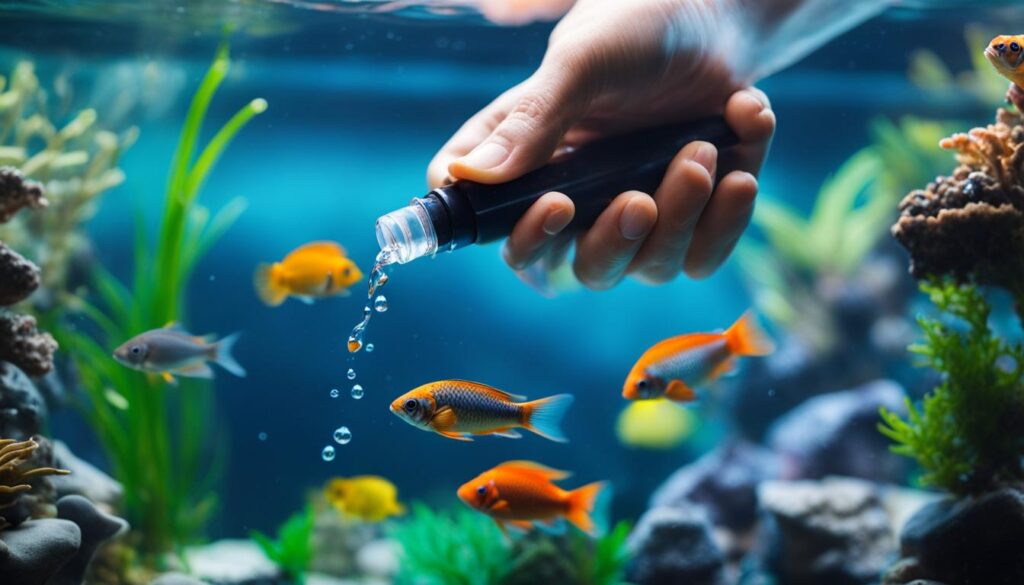
Adjusting pH levels in your aquarium can be a delicate process and must be done safely to avoid harming your tropical fish. Here are some methods for adjusting pH levels:
Natural Methods
One way to adjust pH levels naturally is by using driftwood or almond leaves. These substances release tannins, which can help lower pH levels. It’s essential to monitor the pH levels closely when using any natural methods and make adjustments as necessary to avoid sudden drops.
pH-Adjusting Products
Another option for adjusting pH levels is to use commercial pH-adjusting products. These products come in two types: alkaline and acidic. Alkaline products raise pH levels, while acidic products lower them. It’s crucial to follow the instructions carefully when using pH-adjusting products and avoid adding too much at once, as this can cause a sudden shift in pH levels.
Gradual Adjustments
Regardless of the method used for adjusting pH levels, it’s essential to make gradual adjustments. Sudden changes in pH levels can be stressful for tropical fish and may even be fatal. A general rule of thumb is to adjust pH levels no more than 0.2 units per day.
It’s crucial to monitor the pH levels closely for a few hours after adjustments and make any necessary changes to ensure that the levels remain stable. If the pH levels are still not within the optimal range, continue making small adjustments until you reach the desired pH.
Potential Risks of pH Fluctuations
Maintaining the optimal pH range for your tropical fish is crucial to their health and well-being. However, pH fluctuations can occur due to various factors, such as overfeeding, adding new fish, or even using tap water.
In some cases, sudden changes in pH levels can be harmful to your fish and even cause death. For example, if the pH level drops rapidly, it can lead to an increase in acidity, which can be fatal for some tropical fish species. On the other hand, if the pH level rises too quickly, it can cause alkalinity, which also poses a significant risk to your fish.
It is important to keep an eye on the pH levels in your aquarium to prevent sudden changes. Regular testing and monitoring can help you detect any fluctuations early on so that you can take appropriate action to stabilize the pH environment.
Importance of pH Levels for Tropical Fish
As discussed earlier, maintaining the optimal pH range is essential for the health and well-being of your tropical fish. pH levels can affect various aspects of your fish’s life, including their immune system, digestion, and overall behavior.
For instance, if the pH environment is too acidic or alkaline, it can stress your fish, making them more susceptible to diseases and infections. pH levels can also impact the growth and reproduction of your fish, affecting their overall lifespan.
Therefore, it is crucial to maintain a stable pH environment in your aquarium to ensure the health and longevity of your tropical fish.
“pH is arguably one of the most important parameters to control in an aquarium.” – Roland Bk
Maintaining pH Stability in Your Aquarium

Once you have achieved the optimal pH range for your tropical fish, it is crucial to maintain a stable environment. Fluctuations in pH levels can stress and harm your fish, which can lead to health issues and even death. Here are some practical tips for maintaining pH stability in your aquarium:
- Regular testing: Test the pH levels in your aquarium regularly, at least once a week. This will help you detect any changes in pH early on, so you can take the necessary actions to restore stability.
- Water changes: Regular water changes are essential for maintaining pH stability. Changing 10-20% of the water in your aquarium every week can help dilute any chemical imbalances that could affect the pH levels.
- Consistent feeding: Overfeeding your fish can lead to excess waste and a buildup of organic material, which can affect the pH levels in your aquarium. Feed your fish small amounts of food 2-3 times a day, and ensure that any uneaten food is promptly removed.
- Monitor aquarium inhabitants: Certain fish species, such as cichlids, can alter pH levels in your aquarium through their waste and breeding habits. Ensure that you are aware of which fish species you have in your aquarium and monitor them accordingly.
By following these tips, you can maintain a stable pH environment for your tropical fish. Remember that even small changes can affect pH levels, so it’s essential to be vigilant and take prompt action if any issues arise.
Common pH-related Issues in Tropical Fish Aquariums
Maintaining optimal pH levels in your aquarium is crucial for the health and well-being of your tropical fish. However, despite your best efforts, pH-related issues may still arise.
One common problem is pH crashes, which occur when the pH levels in your aquarium suddenly drop. This can happen due to factors such as overfeeding, overstocking, or an increase in organic waste. pH crashes can be harmful to your fish, causing stress, illness, and even death.
Potential signs of a pH crash include lethargic or gasping fish, cloudy water, and changes in behavior or appetite. If you suspect a pH crash, it’s essential to test the water immediately and take corrective action to raise the levels back to the optimal range.
Another issue is pH fluctuations, which occur when the pH levels in your aquarium vary repeatedly. This can happen if you are using certain types of substrates or decorations that affect the pH levels, or if your water source has fluctuating pH levels.
Fluctuations can cause stress to your fish, leading to health problems and a weakened immune system. If you notice frequent fluctuations in your pH levels, consider making changes to your aquarium setup or using pH-stabilizing products.
Overall, maintaining a stable pH environment is essential for the well-being of your tropical fish. Keep a close eye on pH levels and watch for signs of pH-related issues to ensure a healthy and thriving aquarium.
“pH crashes can be harmful to your fish, causing stress, illness, and even death.”
pH Levels and Fish Compatibility
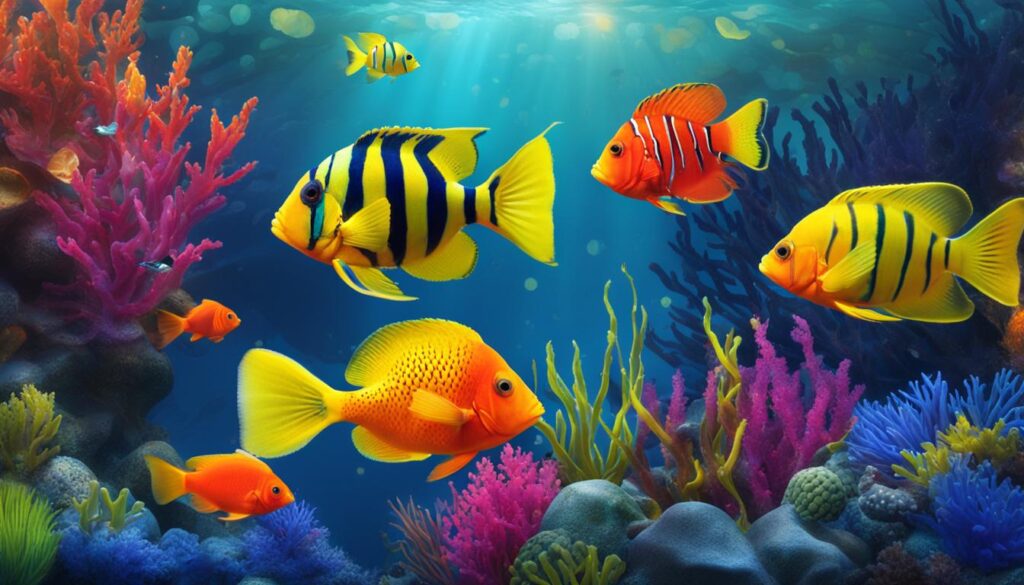
As mentioned earlier, different fish species have varying pH preferences. When creating a community aquarium, it is essential to consider the pH requirements of each species to ensure they are compatible and can thrive together.
Some fish species are more tolerant of fluctuations in pH levels, while others require a stable and specific pH range. For example, African cichlids prefer a higher pH range of 7.8-8.6, while neon tetras thrive in a lower pH range of 5.0-7.0.
Introducing fish with vastly different pH preferences can cause stress and potentially harm your fish. If you are unsure of a species’ pH requirements, research them thoroughly before adding them to your aquarium.
It’s also important to note that while pH is a crucial factor in fish compatibility, it is not the only one. Consider other factors such as temperament, size, and feeding habits when selecting compatible fish for your aquarium.
“Maintaining stable pH levels is crucial to ensure the well-being of your tropical fish, but it is equally important to consider their compatibility with other species in your aquarium.”
Other Water Parameters to Consider
While maintaining optimal pH levels in your aquarium is crucial for the well-being of your tropical fish, other water parameters also play a significant role. By keeping a close eye on these parameters, you can create a thriving environment for your fish.
Temperature
The temperature of the water in your aquarium is essential for the health of your tropical fish. Different species of fish have varying temperature requirements, so it’s essential to choose species that are compatible. Generally, tropical fish prefer a temperature range between 75°F-82°F. It’s crucial to use a reliable thermometer to monitor the water temperature regularly.
Ammonia Levels
Ammonia is a toxic substance that can accumulate in your aquarium if not properly maintained. It is primarily produced from fish waste and uneaten food, so it’s essential to perform regular water changes and use a high-quality filtration system to remove excess ammonia. Consistently high levels of ammonia can lead to stress and illness in your tropical fish.
Water Hardness
Water hardness refers to the amount of dissolved minerals in the water, primarily calcium and magnesium. Your freshwater aquarium should have a neutral hardness level, around 7-10 dH. If the levels are too high or too low, it can have adverse effects on your fish. Use a water testing kit to monitor the hardness level and make necessary adjustments to maintain a suitable environment for your tropical fish.
Conclusion
As a tropical fish enthusiast, I understand the importance of maintaining optimal pH levels for the well-being of my fish. Through this comprehensive guide, I have learned about the significance of pH levels in maintaining water quality and how it impacts the health of my fish.
I now know the ideal pH range for my fish and how to test and monitor pH levels regularly. I have also learned about the different factors that can affect pH levels and the strategies to adjust them safely. Additionally, I understand the potential risks of pH fluctuations and how to prevent sudden changes.
Maintaining a stable pH environment is essential for the health and well-being of my fish. I will continue to follow the practical tips and strategies discussed in this guide and troubleshoot common pH-related issues that may arise in my aquarium.
Finally, I am aware of how pH levels can impact fish compatibility and the other water parameters to consider when maintaining my aquarium’s health. With this knowledge, I am confident in creating a healthy and thriving environment for my tropical fish.
FAQ
What is the importance of pH levels for tropical fish?
pH levels play a crucial role in maintaining water quality and the overall health of tropical fish. It affects their ability to regulate bodily functions and impacts their immune system. Maintaining optimal pH levels is essential for their well-being.
What is the ideal pH range for tropical fish?
The ideal pH range for tropical fish varies depending on the species. Generally, a pH range of 6.5 to 7.5 is suitable for most tropical fish. However, certain species may have specific pH requirements, so it’s essential to research their preferences.
How do I test and monitor pH levels in my aquarium?
Testing pH levels in your aquarium is simple. You can use pH testing kits available at pet stores. Follow the instructions provided with the kit to obtain accurate results. Regularly monitor pH levels to ensure they stay within the optimal range.
What factors can affect pH levels in my aquarium?
Several factors can influence pH levels in your aquarium. These include the source of water, substrate, decorations, and the filtration system. It’s important to be aware of these factors as they can impact the pH balance in your aquarium.
How can I adjust pH levels safely?
If pH levels need adjustment, there are various methods you can use. Natural methods include using driftwood or almond leaves, which slowly release substances that can lower pH. pH-adjusting products are also available. Always follow the instructions provided and make adjustments gradually to avoid stressing your fish.
What are the potential risks of pH fluctuations?
pH fluctuations can stress and harm tropical fish. Sudden changes in pH levels can disrupt their osmoregulation, weaken their immune system, and increase susceptibility to diseases. It’s crucial to maintain a stable pH environment to ensure the well-being of your fish.
How do I maintain pH stability in my aquarium?
To maintain pH stability, ensure consistent water quality and follow good aquarium maintenance practices. Regularly test and monitor pH levels, perform partial water changes, and keep your filtration system clean. Avoid sudden changes that can disrupt the pH balance.
What should I do if I encounter pH-related issues in my aquarium?
If you experience pH-related problems, such as pH crashes or fluctuations, it’s essential to identify and address the underlying cause. Test water parameters, check for contamination or substrate issues, and adjust accordingly. If needed, consult with a knowledgeable aquarium professional for assistance.
How do pH levels affect fish compatibility?
Different fish species have varying pH preferences. Some species thrive in acidic water, while others prefer alkaline conditions. It’s important to consider pH compatibility when selecting fish for your aquarium. Matching the pH requirements of your chosen species will promote a harmonious and healthy environment.
What other water parameters should I consider for my aquarium?
While pH levels are important, other water parameters also impact the health of tropical fish. Factors such as temperature, ammonia levels, and water hardness should be monitored and maintained within suitable ranges. Balancing these parameters will contribute to a thriving aquarium ecosystem.
References
The International Union for Conservation of Nature (IUCN)
The American Society of Ichthyologists and Herpetologists (ASIH)
The National Oceanic and Atmospheric Administration (NOAA)
Please also check out other articles on this website like:
Master Breeding Techniques for Angelfish – A Guide for Hobbyists
Mastering Dwarf Puffer Fish Care: A Friendly Guide
Male or Female Betta? How to Tell – Your Ultimate Guide
Complete Guide to Plecostomus Tank Size: Tips and Advice
Simple Guide to Easy-to-Care-for Aquarium Plants
Discover the Diverse Corydoras Catfish Varieties- A Guide
Get to Know Various Types of Algae Eaters
Mastering Black Ghost Knife Fish Care: A Comprehensive Guide

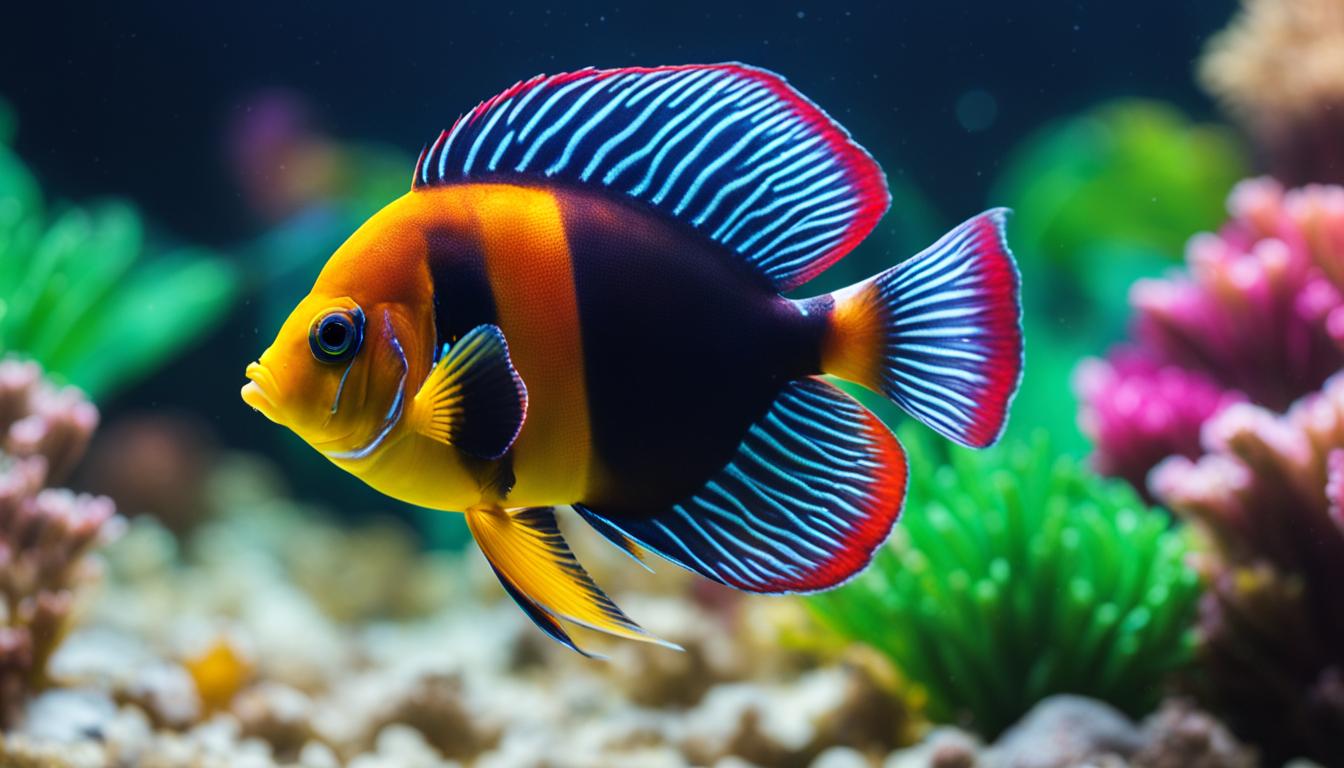
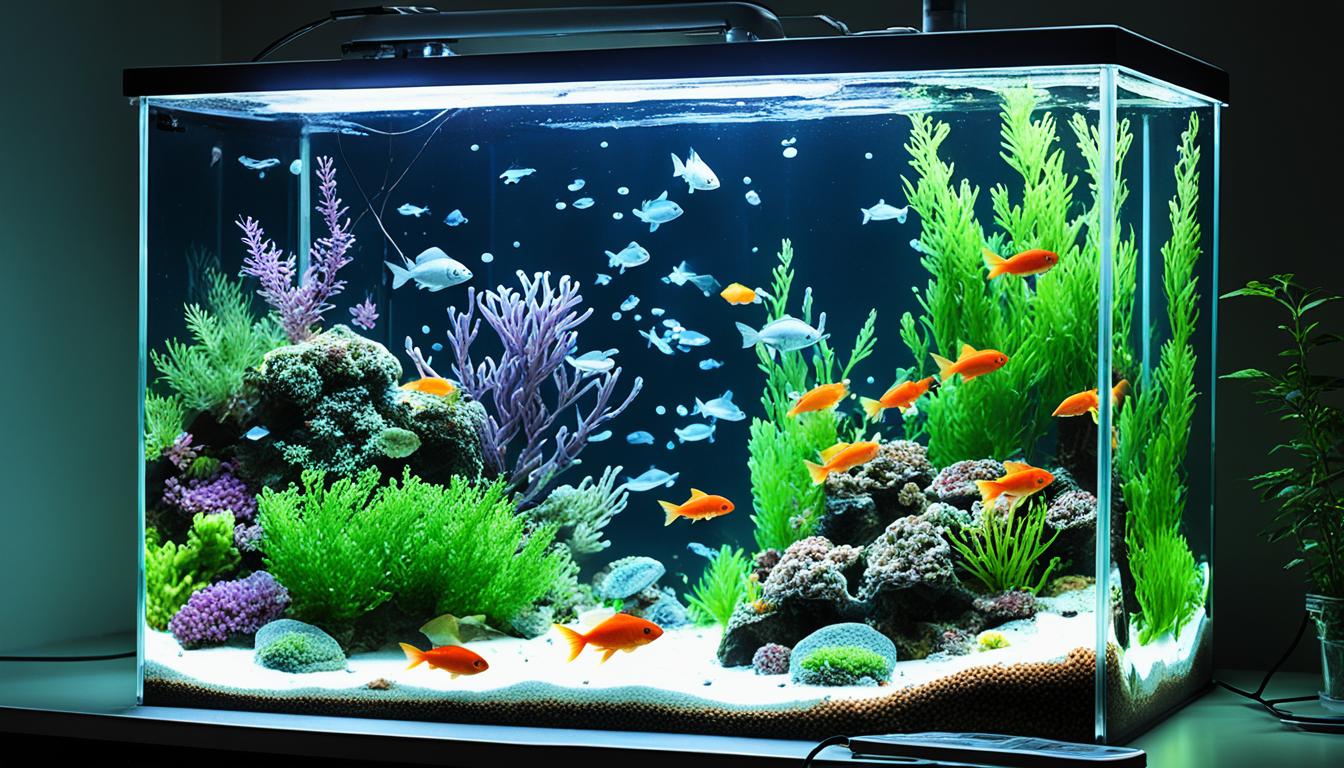
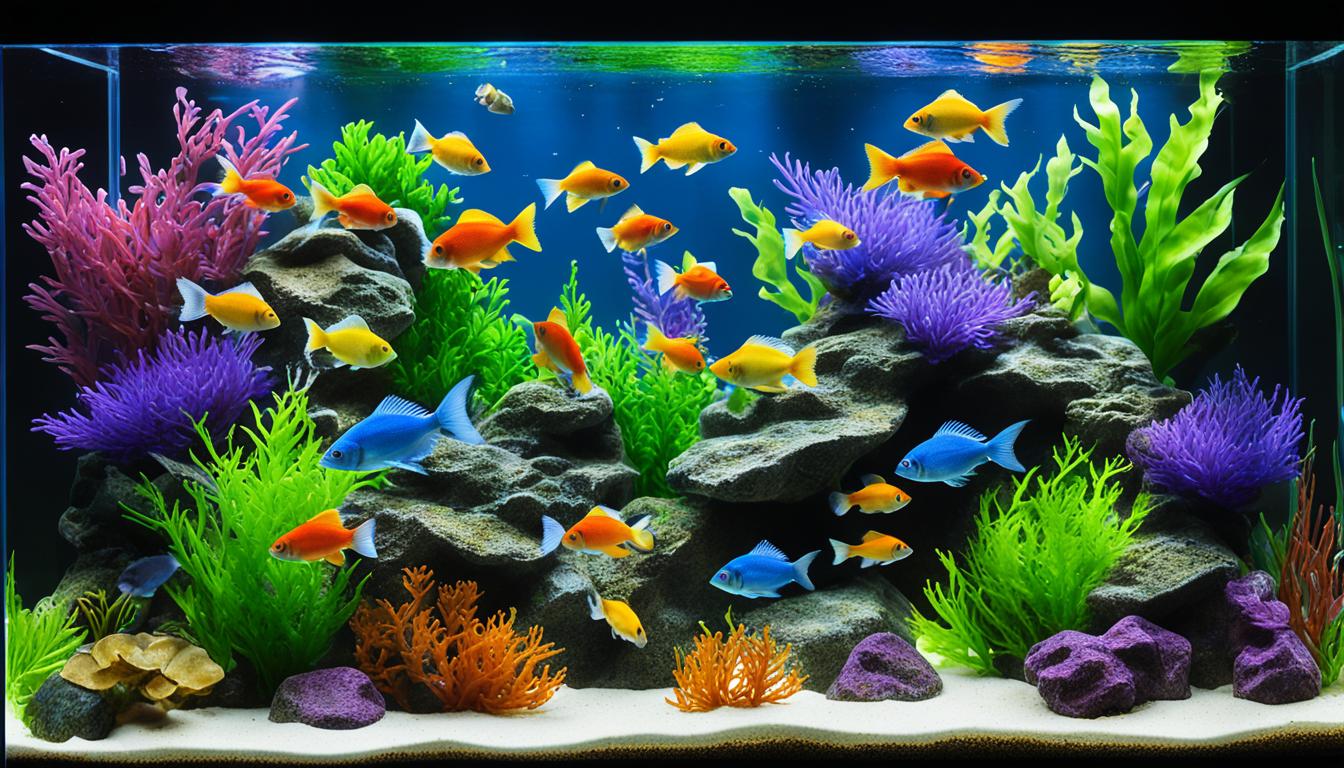
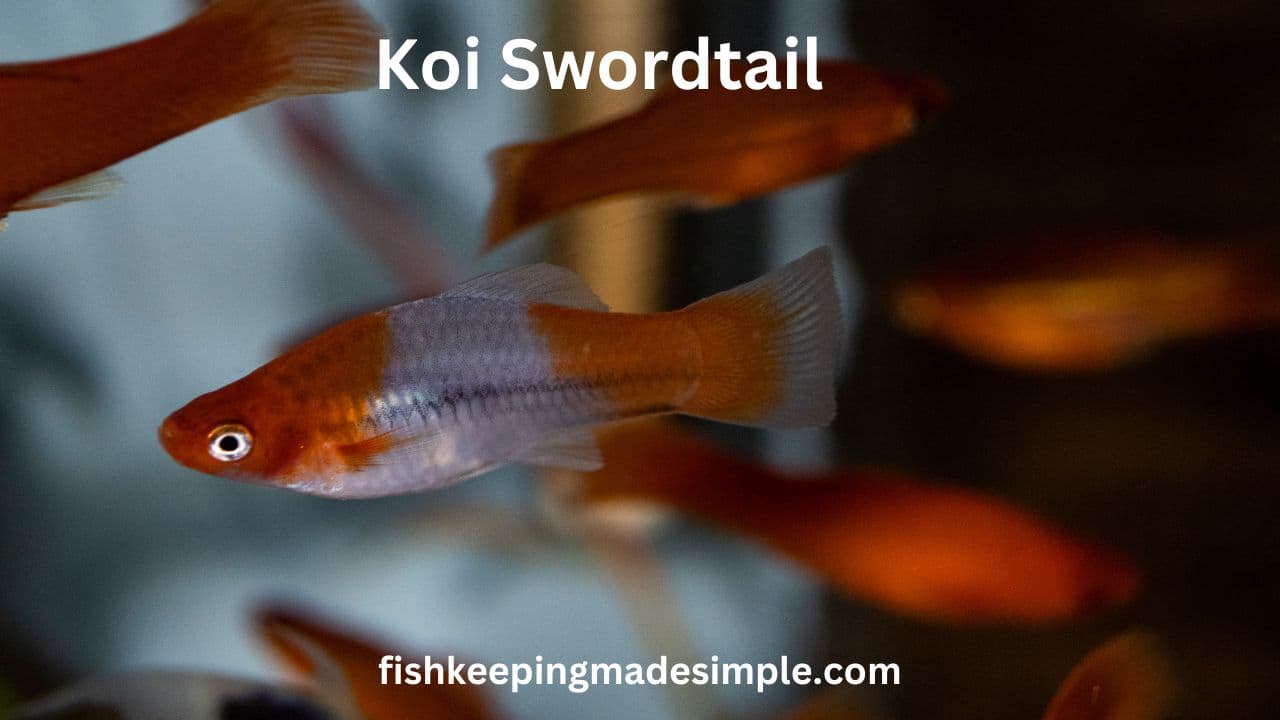

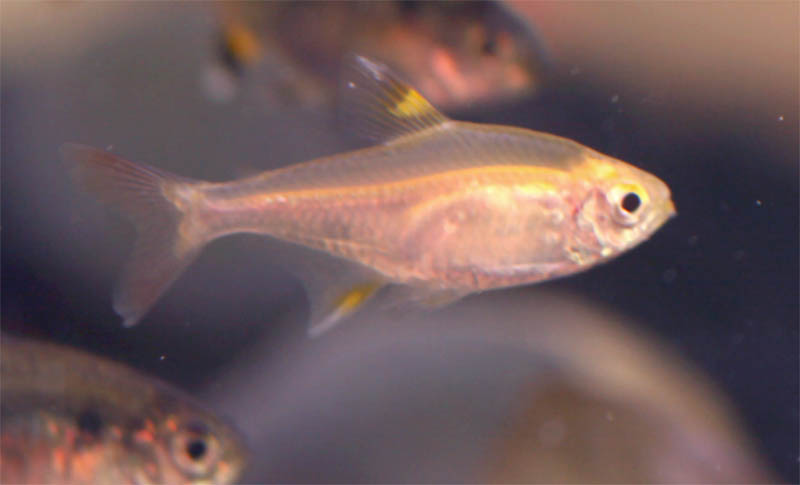
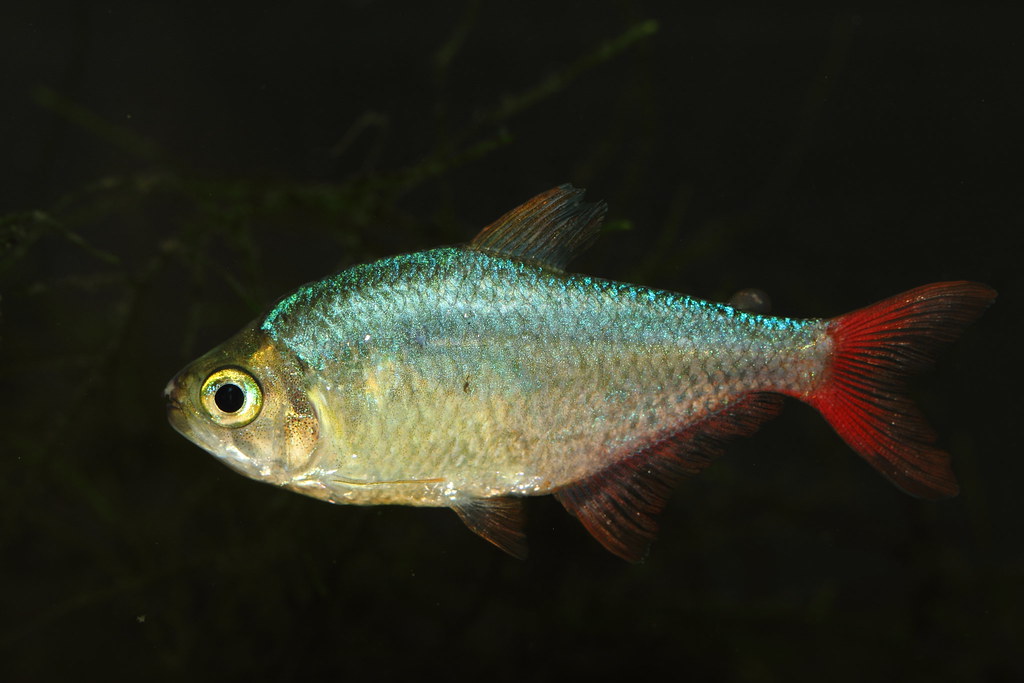
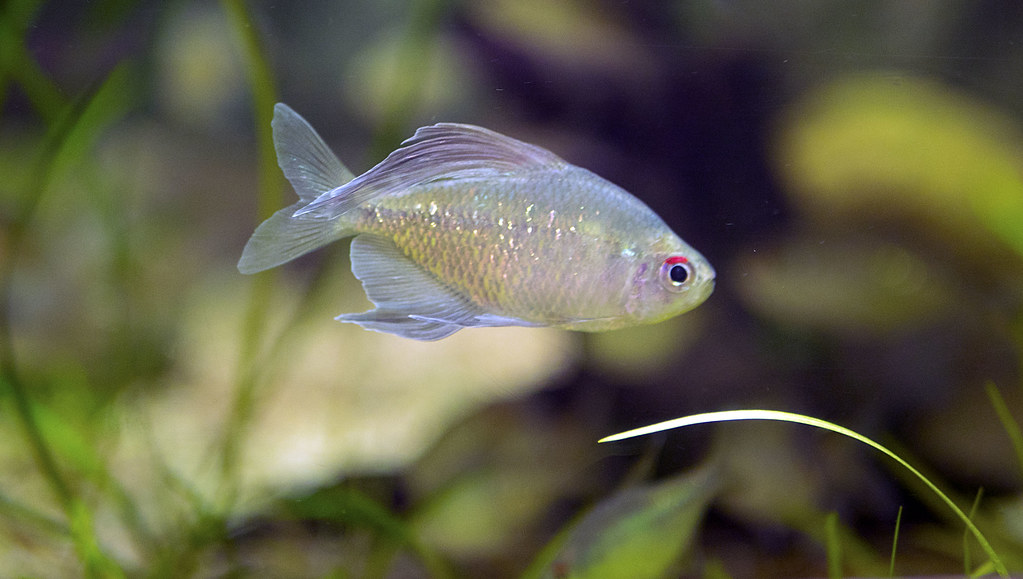
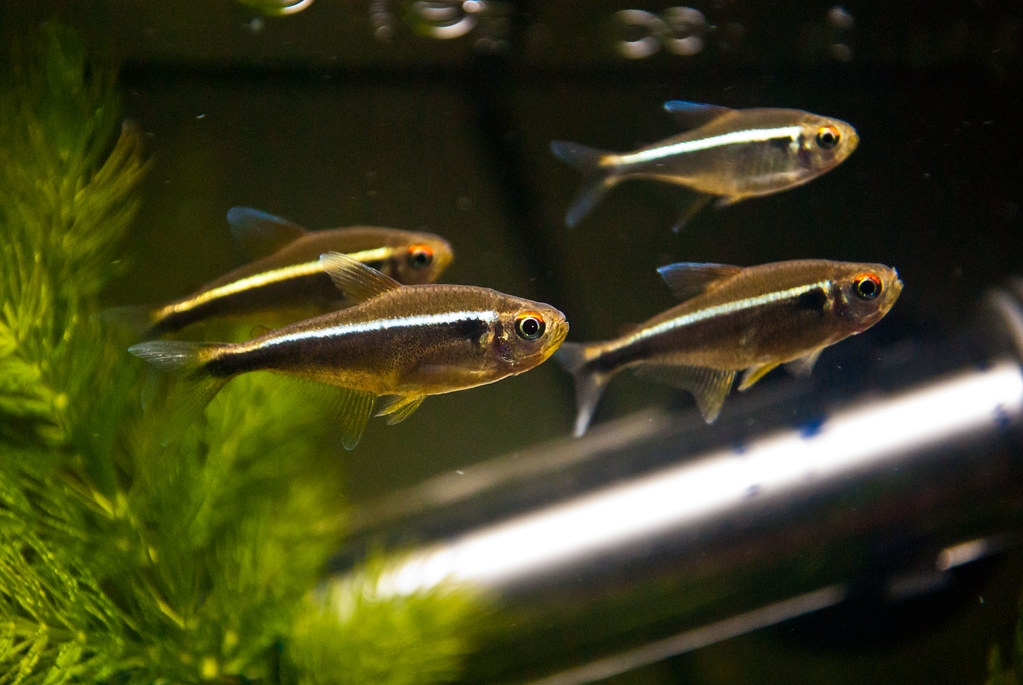
[…] is essential to provide a suitable environment for the fish to grow and thrive. Ensuring adequate tank size, feeding a balanced and nutritious diet, and […]
[…] Dalmatian Balloon Molly, a popular tropical fish, is prone to common health issues and diseases. It is important to provide them with proper care […]
[…] Protein-rich foods are essential for the growth and vitality of koi fish. […]
[…] also known as dolphinfish, is a tropical fish known for its firm texture and mild, sweet flavor. It is a versatile fish that can be grilled, […]
[…] food for your swordtails, opt for high-quality options that are specifically formulated for tropical fish. Look for products that are rich in protein and contain essential vitamins and minerals. Avoid […]
[…] resembles the popular neon tetra. Scientifically known as Hyphessobrycon herbertaxelrodi, these tropical fish are native to the Paraguay River basin in Brazil. They are characterized by two pearly white and […]
[…] perfect habitat for Blue Zebra Mbuna begins with considering tank size and requirements. It’s essential to provide ample space for these fish to swim freely. The appropriate water parameters should be maintained, including temperature, pH, […]